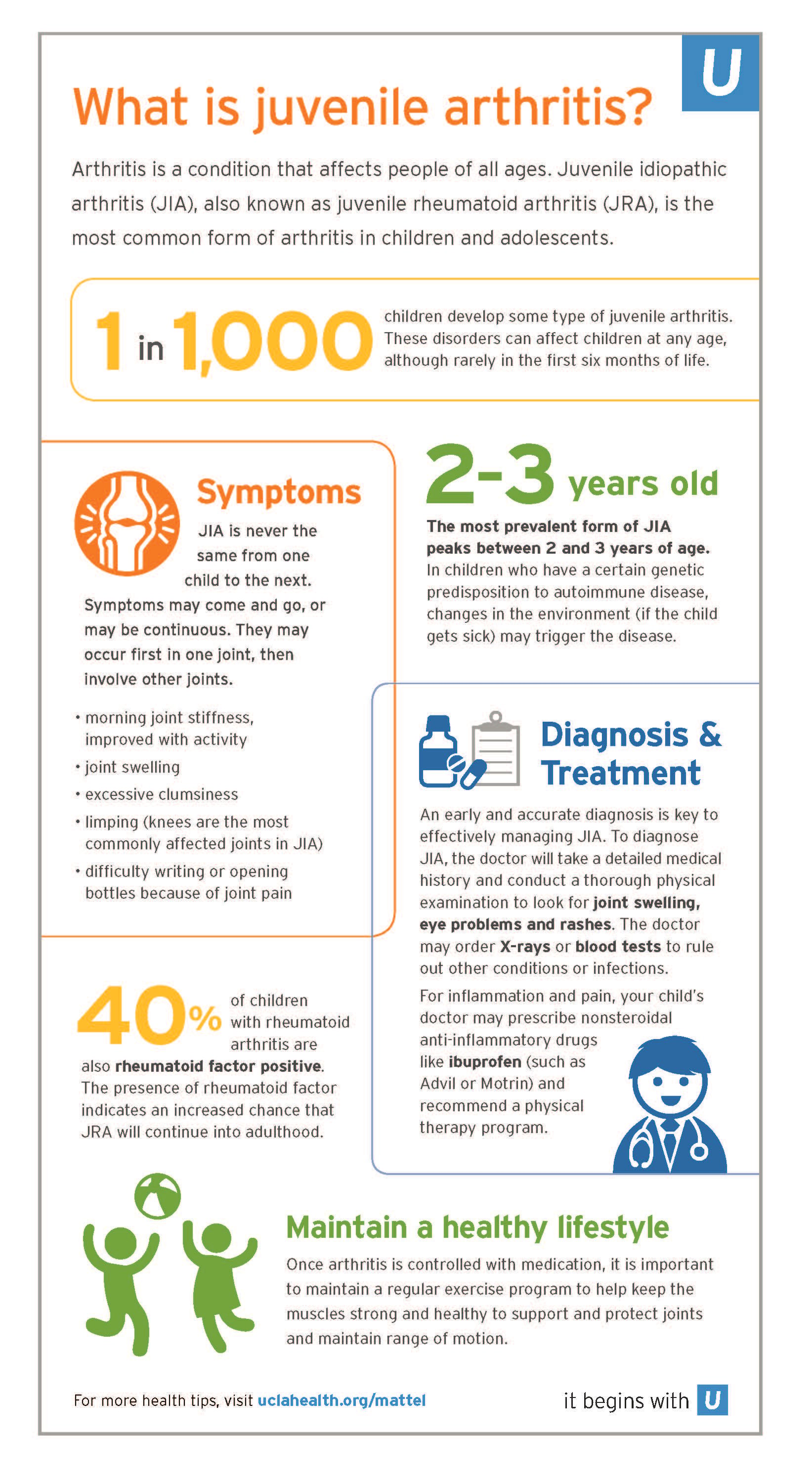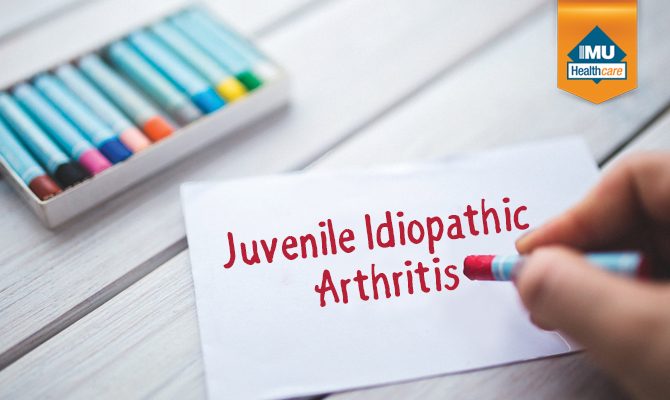What makes a childhood? Idyllic days playing with friends at the nearby park? Scribbling strange words and doodles in the back of school workbooks? Happy days with the family at the beach? Perhaps childhood is best surmised with a mindset: the innocent mind without a care in the world, full of curiosity of the wonders of the world, and the feeling of endless hope and joy. A contented and happy childhood is to all of us the most precious and cherished periods in life. Juvenile Idiopathic Arthritis (JIA) is a childhood disease that can severely impair this idyllic childhood and hamper the growth and development of a child at the most crucial time. Arthritis is commonly seen as the fate of older adults, so often many are surprised to discover that children are not spared from having similar conditions affecting their joints. Parents are also often caught unaware as it would probably never occur to them that their children’s joint complaints may herald the beginning of this disease. It is important for parents to be aware of such a condition as identifying and diagnosing JIA at an early age will more often than not allow children to grow up and lead normal lives.  Dr Lim Sern Chin, a Paediatrician specialising in Paediatric Rheumatology from IMU Healthcare’s Specialist Clinics, helps to shed light on the condition and to clarify some misconceptions.
Dr Lim Sern Chin, a Paediatrician specialising in Paediatric Rheumatology from IMU Healthcare’s Specialist Clinics, helps to shed light on the condition and to clarify some misconceptions.  “JIA is a chronic autoimmune disease causing persistent inflammation of the joints, and is the most common form of arthritis amongst children. The condition is quite different from the adult type of arthritis,” explains Dr Lim. According to the US National Institute of Arthritis and Musculoskeletal and Skin Diseases (NIH – NIAMS), the development of arthritis is two-pronged: first, the child is born with an increased genetic predisposition to arthritis. Then an environmental agent, such as a virus, triggers a strong but disordered immune reaction. The child’s immune system, which is meant to defend the body against bacteria and viruses, begins to attack the body’s own healthily functioning cells and tissues. In JIA, the main targets of this dysfunctional immune response are the joints. Though the exact cause of JIA is still undetermined, we know that it can be potentially debilitating if left undiagnosed or untreated. As children are still in their formative years, untreated joint inflammation can lead to abnormal limb growth and permanent joint damage, resulting in deformities of the joints, or stunted growth. The good news is that JIA is treatable, and if diagnosed early enough, children can go on to lead relatively normal lives. Sadly, the diagnosis of arthritis in children is often more difficult and frequently delayed. Factors contributing to delayed diagnosis include lack of awareness and the fact that the joint inflammation may not be accompanied by much pain. According to Dr Lim, “Even without treatment, the level of pain could reduce over time – but that doesn’t mean that the inflammation in the joints has subsided.” Because of this, parents may not perceive the problem as an urgent one. The following symptoms could be early warning signs that your child may be suffering from JIA, although in many cases the symptoms are less obvious: • Excessive clumsiness or limited joint movements • High fever and skin rash • Swelling of lymph nodes • Limping in the morning or abnormal way of walking • Worsening hand writing due to affected hand joints
“JIA is a chronic autoimmune disease causing persistent inflammation of the joints, and is the most common form of arthritis amongst children. The condition is quite different from the adult type of arthritis,” explains Dr Lim. According to the US National Institute of Arthritis and Musculoskeletal and Skin Diseases (NIH – NIAMS), the development of arthritis is two-pronged: first, the child is born with an increased genetic predisposition to arthritis. Then an environmental agent, such as a virus, triggers a strong but disordered immune reaction. The child’s immune system, which is meant to defend the body against bacteria and viruses, begins to attack the body’s own healthily functioning cells and tissues. In JIA, the main targets of this dysfunctional immune response are the joints. Though the exact cause of JIA is still undetermined, we know that it can be potentially debilitating if left undiagnosed or untreated. As children are still in their formative years, untreated joint inflammation can lead to abnormal limb growth and permanent joint damage, resulting in deformities of the joints, or stunted growth. The good news is that JIA is treatable, and if diagnosed early enough, children can go on to lead relatively normal lives. Sadly, the diagnosis of arthritis in children is often more difficult and frequently delayed. Factors contributing to delayed diagnosis include lack of awareness and the fact that the joint inflammation may not be accompanied by much pain. According to Dr Lim, “Even without treatment, the level of pain could reduce over time – but that doesn’t mean that the inflammation in the joints has subsided.” Because of this, parents may not perceive the problem as an urgent one. The following symptoms could be early warning signs that your child may be suffering from JIA, although in many cases the symptoms are less obvious: • Excessive clumsiness or limited joint movements • High fever and skin rash • Swelling of lymph nodes • Limping in the morning or abnormal way of walking • Worsening hand writing due to affected hand joints
In addition to early diagnosis and treatment, Dr Lim says that monitored exercise and play is actually a crucial part of combating juvenile arthritis because it promotes joint protection by strengthening bones and muscles, improves range of movement as well as the general well-being of the child.
As with all childhood diseases, parents play an integral role in supporting their child and making them feel as normal and integrated as possible. Having a condition that limits their joint movements can also significantly impact the child more than just physically. Apart from the child’s physical well-being, their emotional and psychological well-being, self-esteem and relationships with family members and peers should also be nurtured, enabling them to lead a relatively normal and healthy life. Sources: 1. http://www.niams.nih.gov/Health_Info/Juv_Arthritis/default.asp#4 2. http://www.the-rheumatologist.org/article/patient-fact-sheet-juvenile-idiopathic-arthritis/ 3. http://www.ouh.nhs.uk/oxparc/information/diagnoses/a-z/jia.aspx 4. http://www.arthritisresearchuk.org/arthritis-information/conditions/juvenile-idiopathic-arthritis/different-types.aspx 5. http://www.mayoclinic.org/diseases-conditions/juvenile-rheumatoid-arthritis/basics/definition/con-20014378 6. Arthritis Foundation Malaysia Newsletter: https://issuu.com/jointeffortsafm/docs/joint-efforts-2016-apr This article is brought to you by IMU Healthcare.









